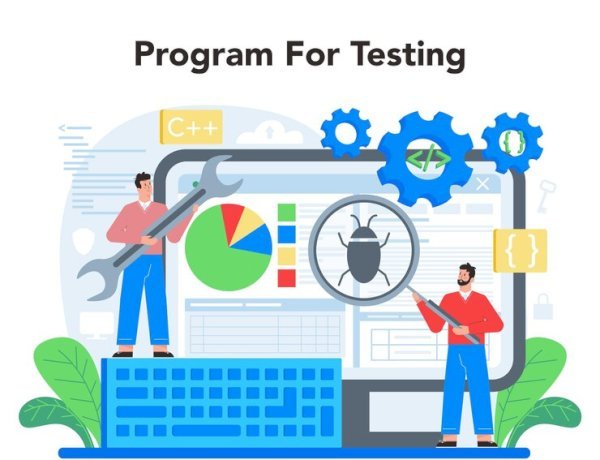How Different Proxy Types Work and When to Use Each in 2025
Learn how different proxy types work in 2025, including use cases, pros, cons, and trends. Find the right proxy for secure and scalable online tasks.

In 2025, the internet is more regulated, competitive, and automated than ever. Whether you're managing multiple social accounts, scraping competitor data, or accessing geo-restricted content, using the right proxy has become non-negotiable. But not all proxies serve the same purpose.
In this guide, we break down the major proxy categories, how each works, when to use them, and what’s changed in 2025 compared to previous years. Whether you’re a beginner or an enterprise user, this guide gives you the knowledge to choose the perfect proxy strategy. For a full breakdown of all proxy types, visit this detailed guide.
What Is a Proxy Server?
A proxy server acts as an intermediary between your device and the website you’re trying to access. It hides your real IP address and routes your request through another server. This helps with:
-
Anonymity: Hides your identity and location
-
Access Control: Bypasses geo-blocks and censorship
-
Security: Protects sensitive data
-
Automation: Enables scalable web crawling and task bots
-
IP Masking: Helps bypass bans or restrictions on specific websites
-
Load Balancing: Distributes network traffic across multiple servers
In 2025, more than 58% of global traffic is automated, making ethical and effective proxy use more important than ever.
1. Residential Proxies
How They Work
Residential proxies use real IP addresses assigned by ISPs to home devices, making them appear as legitimate users. These proxies allow users to simulate real user behavior when accessing websites, minimizing the risk of detection.
Best For
-
E-commerce scraping
-
Ad verification
-
Geo-targeted content access
-
Bypassing anti-bot protections
Pros
-
Trusted by websites
-
Lower detection risk
-
Accurate location targeting
-
Effective for long-term projects
Cons
-
More expensive
-
Limited scalability for high-speed tasks
-
Slower speeds compared to datacenter proxies
2025 Updates
AI-powered rotation and IPv6 support make residential proxies even more powerful this year. Providers now offer improved dashboards with session control, usage analytics, and integration with scraping tools.
2. Datacenter Proxies
How They Work
These proxies use virtual IPs from cloud servers. They're fast and scalable but easier to detect due to non-ISP association.
Best For
-
SEO monitoring
-
Bulk data tasks
-
Open-access scraping
-
Keyword tracking and competitor analysis
Pros
-
Fast speeds
-
Affordable
-
High availability
-
Easy to scale
Cons
-
Higher ban risk
-
Less location precision
-
Easier to detect on websites with anti-bot tools
2025 Updates
Improved integration with automation tools like Scrapy, Playwright, and Puppeteer. Some providers now offer smart rotation and shared IP pools for lower-cost scalability.
3. Mobile Proxies
How They Work
Mobile proxies route traffic through 4G/5G devices, using IPs from telecom carriers. These proxies appear highly legitimate to websites due to dynamic mobile IPs.
Best For
-
Social media bots
-
App testing
-
Mobile ad verification
-
Managing multiple mobile accounts
Pros
-
Highest trust
-
Excellent for mobile platforms
-
Rotating IPs via carrier network
-
Difficult for websites to block
Cons
-
Expensive
-
Limited availability
-
Slower than datacenter alternatives
2025 Trend
Faster 5G speeds and device emulation tools boost mobile proxy performance. Businesses increasingly use mobile proxies for app store intelligence and mobile A/B testing.
4. Rotating Proxies
How They Work
These proxies change IPs at set intervals or per request, preventing bans and mimicking user behavior.
Best For
-
High-volume scraping
-
Price tracking
-
Travel fare comparisons
-
Data aggregation projects
Pros
-
High stealth
-
IP pool variety
-
Reduces ban risks
-
Ideal for non-login scraping
Cons
-
Session management issues
-
May trigger bot checks if poorly configured
2025 Updates
Smarter, behavior-based rotation increases scraping success. Providers now offer automatic CAPTCHA bypass and JavaScript rendering options.
5. Static Residential Proxies
How They Work
These provide fixed residential IPs, ideal for long-term use. They combine the authenticity of residential proxies with the consistency of static IPs.
Best For
-
Account logins
-
Payment systems
-
Affiliate dashboards
-
Managing business dashboards or SaaS platforms
Pros
-
Stable sessions
-
Residential trust
-
Low block rates
-
Great for maintaining user profiles
Cons
-
Not ideal for scraping at scale
-
Limited availability
Proxy Use Case Comparison Table (2025)
| Use Case | Recommended Proxy Type | Reason |
|---|---|---|
| Social Media Management | Mobile / Static Residential | Trusted IPs reduce bans |
| Price Monitoring | Rotating + Datacenter | Scale and speed |
| Streaming Access | Residential | Accurate regional IPs |
| Ad Verification | Residential / Mobile | Geo-accuracy and reliability |
| App Testing | Mobile | Real device behavior |
| SEO Audits | Datacenter / Rotating | Fast, scalable analysis |
| Affiliate Marketing | Static Residential | Stable and persistent IP sessions |
| Account Creation | Residential | High legitimacy, avoids blacklists |
Global Proxy Trends in 2025
-
North America: Mobile proxies for influencer marketing and app testing
-
Europe: Residential proxies for GDPR-safe scraping and localization testing
-
Asia-Pacific: Rotating proxies used in price intelligence and travel markets
-
Middle East & Africa: Proxies for bypassing censorship and digital trade growth
Industry Adoption
Top Sectors Using Proxies
-
Digital Marketing
-
E-commerce
-
Finance
-
Media & Publishing
-
Cybersecurity
-
SaaS & Automation Tools
Proxies are now core tools in managing data, automation, and privacy across these sectors. Companies also use proxies for sentiment analysis, content localization, and automated QA testing.
Choosing the Right Proxy Provider
When selecting a provider, check for:
-
Proxy type variety (residential, mobile, static, rotating)
-
Geo-targeting options (city-level targeting, regional pools)
-
IP pool size and diversity
-
Session control and rotation frequency
-
Legal compliance (GDPR, CCPA)
-
Security features and performance analytics
Tip: Always choose providers that offer SLAs (Service Level Agreements) and trial periods to test proxy performance before committing.
Avoid free proxies—they're often slow, unsafe, shared, and potentially compromised.
Final Thoughts
Proxies are essential for privacy, scale, and smart web access in 2025. Whether you're scraping, automating, testing apps, or managing social accounts, choosing the right type is crucial.
Today’s proxies offer enhanced rotation logic, AI-powered detection avoidance, and deep integration with modern automation tools. By understanding your goals and matching them to the best proxy type, you can operate more efficiently and securely.
Use proxies responsibly, follow ethical scraping practices, and partner with trusted providers to stay ahead in the data-driven world of 2025.
FAQs
1. What’s the difference between residential and datacenter proxies?
Residential proxies use real home IPs and are harder to detect. Datacenter proxies are faster but more likely to be blocked.
2. Are proxies legal in 2025?
Yes, proxies are legal in most countries, as long as you don’t break website terms or laws.
3. Can I use free proxies for scraping?
Free proxies are risky—often slow, shared, and unsafe. Paid proxies are more reliable and secure.
4. Which proxy is best for social media automation?
Mobile proxies work best—they're trusted and reduce the risk of bans on platforms like Instagram or TikTok.
5. Why use rotating proxies?
Rotating proxies change IPs automatically, helping avoid blocks during scraping or bulk requests.
6. How do I choose a proxy provider?
Look for reliable IPs, geo-targeting options, rotation features, good speed, and legal compliance.




























